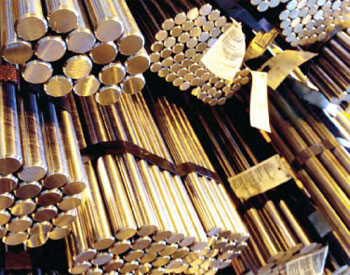
Expansion in progress at the Jamshedpur site, India.
|
|
Amidst the backdrop of sluggish growth, Tata Steel achieved important milestones in the areas of safety, product development and production performance.
|
| Financial performance |
The Tata Steel Group recorded a consolidated profit after tax of  5,390 crores (US$1.06 billion) in the Financial Year 2011-12, compared to 5,390 crores (US$1.06 billion) in the Financial Year 2011-12, compared to  8,983 crores (US$1.77 billion) in Financial Year 2010-11. The Group EBITDA was 8,983 crores (US$1.77 billion) in Financial Year 2010-11. The Group EBITDA was  13,533 crores (US$2.66 billion) for the Financial Year 2011-12, compared to 13,533 crores (US$2.66 billion) for the Financial Year 2011-12, compared to  17,116 crores (US$3.36 billion) in the previous year. The Group's consolidated turnover was 17,116 crores (US$3.36 billion) in the previous year. The Group's consolidated turnover was  1,32,900 crores (US$26.13 billion) in Financial Year 2011-12 compared to the turnover of 1,32,900 crores (US$26.13 billion) in Financial Year 2011-12 compared to the turnover of  1,18,753 crores (US$23.34 billion) in Financial Year 2010-11. 1,18,753 crores (US$23.34 billion) in Financial Year 2010-11. |
| Indian operations |
Indian operations recorded its best ever production of Hot Metal, Crude Steel and Works Saleable Steel. Production was approximately 4% higher than in Financial Year 2010-11. Crude steel production at 7.1 million tonnes exceeded the nameplate capacity in a year, when the Indian steel industry was impacted on account of a paucity of raw materials and higher power and freight costs. Indian operations recorded its best ever sales of 6.6 million tonnes, exceeding the previous best of 6.4 million tonnes, in spite of sluggish market conditions prevailing, with interest rates remaining at elevated levels throughout the year. Flat products sales registered a 5.6% increase, reaching 3.7 million tonnes. Sales in the Automotive segment crossed 1 million tonnes with highest-ever Skin Panel sales of 0.06 million tonnes. The Company continued its efforts to increase the proportion of value-added products and worked in tandem with auto customers, meeting stringent technical specifications. With the newly institutionalised Corporate Quality assurance system, the Company achieved its best-ever Quality performance, with customer claims reducing by more than 40% over Financial Year 2010-11.
Long products sales were at similar levels compared to the previous year, though the focus was to enrich the product mix by maximising downstream sales through conversion of semis. Leveraging the countrywide distribution network, in conjunction with tracking dealer inventory on a daily basis, led to a spurt in retail sales. Value-selling of Cut and Bend and Coupler products from 'Ready Build' centres at distributor premises will aid the Company's product differentiation strategy in the future.
The Company recorded a 25% increase in sale of branded products in India with total branded sales touching the 2 million tonnes mark. Its leading retail brands, TISCON and Tata Shaktee, recorded a 45% (crossed1 million tonnes) and 11% (0.212 million tonnes) increase in sales respectively. Branded products like Steelium and Galvano recorded a 7% growth. The Ferro Alloys and Minerals Division continued to supplement strong earnings of the steel division in spite of weak international demand, which affected exports. Tata Steel is planning an entry into new markets to reduce the dependence on China and focus on the domestic market, by exploiting the domestic market's potential through an organised distribution network.

Finished Products
Tata Steel Limited (TSL) and Krosaki Harima Corporation (KHC) signed definitive agreements on 21st April, 2011 to induct KHC as a strategic partner in Tata Refractories Limited (TRL). Under this arrangement, KHC acquired an equity stake of 51% out of TSL's 77.46% stake in TRL. TSL continues to hold a 26.46% equity stake. The transaction was based on an equity valuation of TRL amounting to approximately  1,130 crores (US$222 million). Tata Steel believes that the strategic association with KHC will allow TRL Krosaki to build a hightech, developed product portfolio. 1,130 crores (US$222 million). Tata Steel believes that the strategic association with KHC will allow TRL Krosaki to build a hightech, developed product portfolio.
|
|